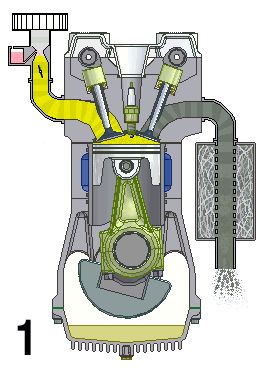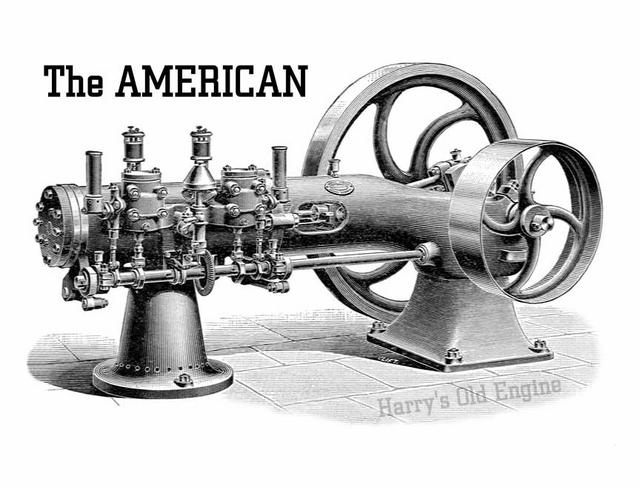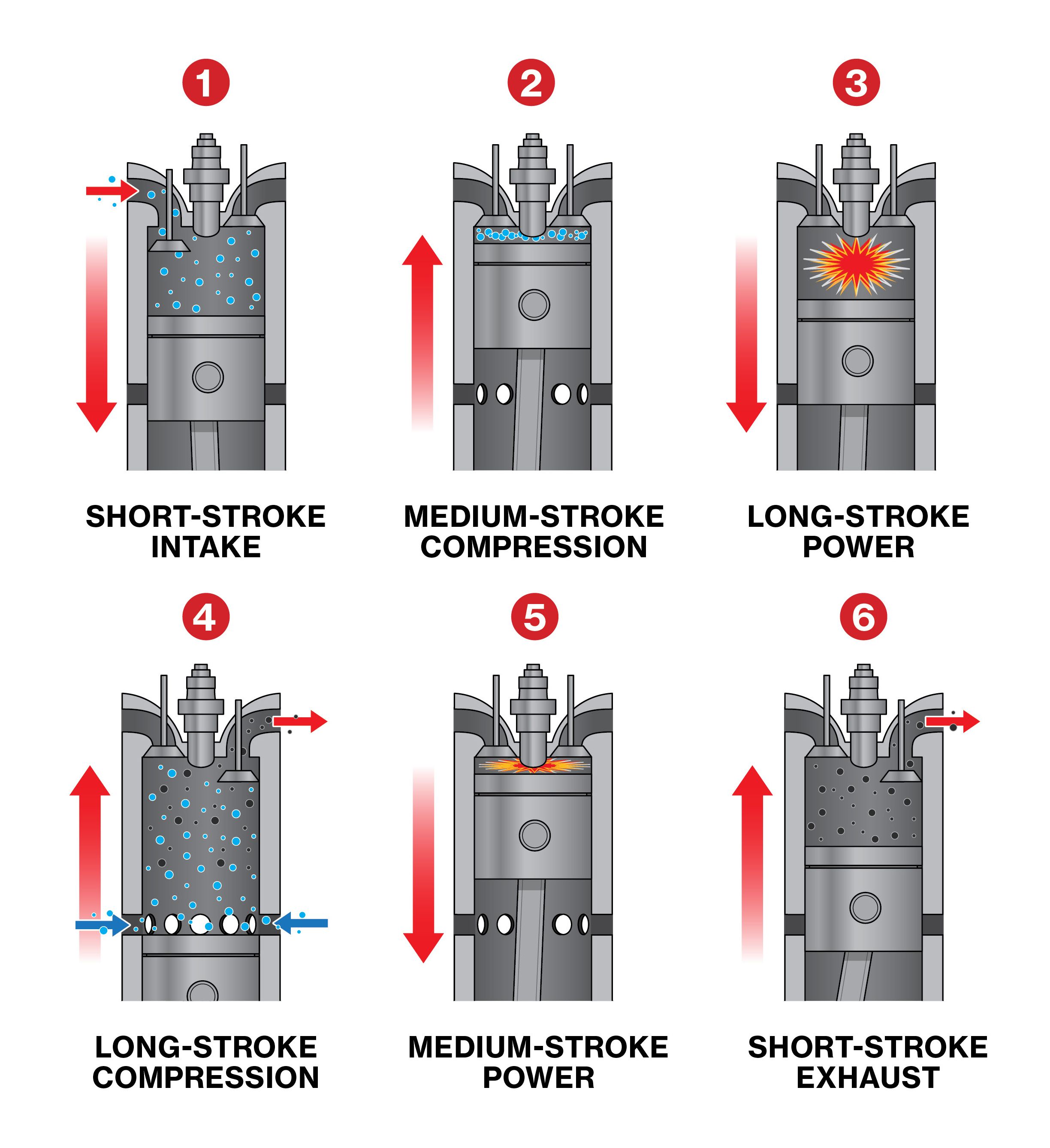FC01 Shailendra Gaur's Six-Stroke Engine
Shailendra Gaur's Six-Stroke Engine Claims

Executive Summary
Shailendra Kumar Singh Gaur, a science graduate from Prayagraj, claims to have developed a revolutionary six-stroke engine achieving 176-200 km/L fuel efficiency after 18 years of research. This fact-check analyzes his claims against scientific literature, patent references, and thermodynamic principles.
Verdict: PARTIALLY PLAUSIBLE WITH SIGNIFICANT CAVEATS - While six-stroke engines are scientifically valid and efficiency improvements are possible, Gaur's specific claims require contextual interpretation and independent verification.
Key Claims Analysis
CLAIM 1: 176-200 km/L Fuel Efficiency
Media Reports State:
"His prototype achieved over 176 kilometers per litre on a 100cc bike... with additional funding, it could reach over 200 kilometres per litre"
"A 2017-model TVS motorcycle with a 100cc engine... ran for 35 minutes on just 50 ml of gasoline"
FACT-CHECK: NEEDS CONTEXT - POTENTIALLY MISLEADING
Baseline Context Analysis
graph TD
A[2017 TVS 100cc] --> B[50ml Petrol]
B --> C[35 Minutes Runtime]
C --> D[176 km/L Claimed]
style A fill:#f9f,stroke:#333,stroke-width:2px
style D fill:#9f9,stroke:#333,stroke-width:2px2017 TVS 100cc Motorcycle Specifications:
- Standard TVS Sport (2017): 67-70 km/L typical efficiency
- TVS Sport record efficiency: 76.4 km/L (under optimal conditions)
- Age factor: 8-year-old motorcycle likely has reduced efficiency due to wear
Efficiency Calculation Context:
If the baseline 2017 TVS achieved only 40-50 km/L (due to age/wear), then:
- Gaur's 176 km/L = 3.5-4.4x improvement over degraded baseline
- This translates to 2.3-2.6x improvement over original specifications
- More reasonable but still extraordinary compared to academic research
Scientific Evidence Context:
- Academic six-stroke research: 16% reduction in fuel consumption (1.19x improvement)
- Best documented six-stroke efficiency: ~51.5% thermal vs. 36.6% four-stroke (1.4x)
- Theoretical maximum for IC engines: ~60% (Carnot limit)

CLAIM 2: "70% Energy Utilization" Clarification
Media Reports State:
"capable of using about 70 percent of energy"
FACT-CHECK: INTERPRETATION MATTERS
Thermodynamic Reality Check

Efficiency Bounds:
- Carnot limit for IC engines: ~60% maximum theoretical
- Current best production engines: 40-50% thermal efficiency
- Academic six-stroke maximum: ~51.5% demonstrated
Possible Interpretations:
Option A: Absolute Efficiency (Problematic)
- 70% thermal efficiency would exceed Carnot limit (~60%)
- Thermodynamically impossible for practical IC engines
Option B: Relative Improvement (Plausible)
- 70% more efficient than baseline = 1.7x improvement
- If baseline was 25%, then: 25% × 1.7 = 42.5% efficiency
- Within theoretical limits and aligns with six-stroke research
25% × 1.7 = 42.5% efficiency - Thermodynamically possible
Option C: Efficiency vs. Aged Baseline (Most Likely)
- Old 2017 motorcycle achieving ~20-25% efficiency
- 70% improvement: 20% × 1.7 = 34% efficiency
- Reasonable and achievable with advanced modifications
Critical Discovery
- New efficiency: 67-70 km/L
- After 8 years: Likely degraded to 40-50 km/L
graph LR
A[Degraded Baseline
40-50 km/L] --> B[Gaur's Result
176 km/L]
A --> C[3.9x Improvement]
D[Original Specs
67-70 km/L] --> B
D --> E[2.6x Improvement]
style A fill:#ffcccc
style B fill:#ccffcc
style C fill:#ffffcc
style E fill:#ffffccRecalculating Gaur's Claims:
- 176 km/L ÷ 45 km/L = 3.9x improvement
- 176 km/L ÷ 67 km/L = 2.6x improvement (vs. original)
CLAIM 3: "Six-Stroke Engine" Technology
Media Reports State:
"After an incredible 18 years of relentless hard work, he has successfully created a six-stroke engine"
FACT-CHECK: PARTIALLY TRUE
Patent Analysis Correlation:
timeline
title Patent Timeline & Gaur's Development
2011 : WO2011074002A1
: Offset Piston System
: Claims dramatic efficiency
2018 : WO2018122876A1
: TDC Dwell Mechanism
: "60 degrees adjustment"
2025 : Shailendra Gaur Claims
: "Adjusted to 60 degrees"
: 176 km/L efficiencyWO2018122876A1 (TDC Dwell System):
- Gaur's Description: "adjusted it to 60 degrees"
- Patent Content: Holds piston at TDC for "60-80 degrees of crank movement"
- Assessment: STRONG CORRELATION - Suggests implementation of this technology
WO2011074002A1 (Offset Piston System):
- Gaur's Claims: Multiple fuel capability, high efficiency
- Patent Content: Claims "1/3rd fuel per combustion" and multi-fuel operation
- Assessment: POSSIBLE CORRELATION - Similar efficiency and fuel flexibility claims
Academic Six-Stroke Research Results
Recent studies (2019-2024) show documented improvements:
| Parameter | Four-Stroke | Six-Stroke | Improvement |
|---|---|---|---|
| Thermal Efficiency | 36.6% | 51.5% | +40.8% |
| Brake Power | Baseline | +33.1% | +33.1% |
| BSFC | Baseline | -16% | -16% |
| NOx Emissions | Baseline | -55% | -55% |
Source: ResearchGate - Six-Stroke Engine Studies
Historical Six-Stroke Examples
Successful Implementations:

- Griffin six-stroke (1883): Used for stationary power generation
- Bajulaz engine: 40% fuel consumption reduction claimed
- Academic prototypes: 16-33% efficiency improvements documented
Failed/Abandoned Examples:
- Crower six-stroke: Patent application abandoned due to practical issues
- Various automotive prototypes: None reached commercial production
True Six-Stroke Engine Concepts:

Academic Six-Stroke Designs:
- Water injection after conventional four-stroke cycle
- Steam expansion using waste heat
- Two additional strokes: second power stroke + exhaust stroke

CLAIM 4: "Almost Zero Pollution"
Media Reports State:
"Almost Zero Pollution — A giant leap for sustainability"
"Carbon monoxide and other harmful gases originate in almost negligible amounts"
FACT-CHECK: EXAGGERATED BUT DIRECTIONALLY CORRECT
Scientific Evidence:
- Academic six-stroke studies: NOx emission reductions due to lower combustion temperatures
- Water injection effects: Can reduce certain emissions through cooling
- Emission reductions: 55% reduction documented in research, not "almost zero"
Patent Reference:
WO2011074002A1 claims: "substantially the emission of hazardous gases as carbon mono oxide etc" - consistent with research findings.
Independent Verification Status
Testing and Documentation
❌ No independent automotive testing agency verification
❌ No peer-reviewed publications
❌ No standardized fuel economy testing (SAE/ISO protocols)
❌ No third-party emissions testing
❌ No durability or reliability testing
Media Coverage Analysis
✅ Multiple Indian media outlets covering story
⚠️ All reports based on inventor's claims, not independent testing
⚠️ No technical journalists with engineering background involved
⚠️ Social media amplification without technical scrutiny
Contextual Assessment Framework
Plausibility Analysis
pie title Assessment Breakdown
"Likely True" : 40
"Needs Verification" : 35
"Questionable" : 25What's Likely True:
- ✅ Gaur has developed some form of modified internal combustion engine
- ✅ Six-stroke engines can provide significant efficiency improvements (1.4-1.7x)
- ✅ His work may implement legitimate patent concepts (TDC dwell, offset pistons)
- ✅ Substantial emission reductions are achievable with advanced designs
- ✅ 176 km/L may be achievable compared to aged/degraded baseline motorcycle
What Needs Clarification & Verification:
- ⚠️ Baseline efficiency of the test motorcycle (original vs. degraded)
- ⚠️ Testing conditions (speed, load, duration, environment)
- ⚠️ "70% efficiency" interpretation (absolute vs. relative improvement)
- ⚠️ Reproducibility under standardized conditions
- ⚠️ Peer-review for technical validation
- ⚠️ Durability and commercial viability assessment
What Remains Questionable:
- ❌ No independent verification by recognized testing agencies
- ❌ Lack of standardized testing protocols
- ❌ Media coverage lacking technical scrutiny
- ❌ Extraordinary claims without extraordinary evidence
Recommendations and Conclusions
Final Takeaway
graph TD
A[Extraordinary Claims] --> B{Proper Context?}
B -->|Yes| C[Potentially Valid]
B -->|No| D[Likely Invalid]
C --> E[Requires Verification]
D --> F[Dismiss or Recontextualize]
style A fill:#ffcccc
style C fill:#ccffcc
style E fill:#ffffccFor Media and Public:
- Interpret efficiency claims contextually - consider baseline conditions
- Demand independent testing by recognized automotive agencies
- Understand relative vs. absolute efficiency improvements
- Apply informed skepticism while remaining open to innovation
For Technical Community:
- Offer standardized testing collaboration if claims are genuine
- Provide educational context about thermodynamic limits
- Encourage proper scientific methodology for validation
For Potential Stakeholders:
- Require third-party verification under standardized conditions
- Assess claims within thermodynamic possibility bounds
- Consider age and condition of baseline test vehicle
- Evaluate patent correlation and technical feasibility
References and Sources
News Articles and Media Coverage
Primary News Sources:
- The Daily Jagran - Exclusive Interview with Shailendra Gaur - August 2025
- TC News - Prayagraj Innovator Unveils Revolutionary Six-Stroke Engine - August 2025
- MotoPinas - Indian Inventor Develops Engine Capable of 176 km/L - August 2025
- OB News - Shailendra Made a Wonderful Engine - August 2025
Social Media Coverage:
- TDP4All Twitter/X Post - Six-Stroke Engine Breakthrough
- Multiple Instagram and Facebook posts covering the story across Indian social media
Patent Documents
Referenced Patents:
-
WO2018122876A1 - Assembly for Increasing Dwell at TDC in a Combustion Engine - Published July 5, 2018
- PCT/IN2017/050625 - Filed from India
- Claims TDC dwell mechanism for improved efficiency
-
WO2011074002A1 - High Efficiency Internal Combustion Engine - Published June 23, 2011
- PCT/IN2010/000807 - Filed from India
- Claims offset piston geometry and extended TDC system
Academic and Technical Sources
Six-Stroke Engine Research Papers:
- ResearchGate - 6-Stroke Engine: Thermodynamic Modelling and Design for Testing - Nimsiriwangso et al., 2019
- Springer - 6-Stroke Water Injection Engine Literature Review - February 2024
- ScienceDirect - A Highly Efficient Six-Stroke Internal Combustion Engine Cycle - December 2009
Engine Efficiency and Thermodynamics:
- Physics Stack Exchange - Maximum Theoretical Efficiency of Internal Combustion Engine
- Physics LibreTexts - Engines and Thermal Efficiency - November 2022
- Wikipedia - Engine Efficiency - July 2025
- Wikipedia - Six-stroke Engine - Updated August 2025
Baseline Vehicle Specifications
TVS Motorcycle Data:
- BikeWale - TVS Sport Price and Specifications - Current specifications and mileage data
- BikeDekho - TVS Sport Specifications - Detailed technical specifications
- 91Wheels - TVS Sport 2017-2020 Specifications - Historical model specifications
- Wikipedia - TVS Sport - Model history and records
- Indian Autos Blog - TVS Sport Sets Record for Highest Fuel Efficiency - September 2019
Technical Resources and Animations
Educational Content:
- saVRee - Four Stroke Engine Cycle (Animated) - September 2020
- Briggs & Stratton - How a 4-Stroke Engine Works
- Animated Engines - Home Page - Comprehensive engine animation collection
- University of Washington - Four Stroke Cycle Engines
Six-Stroke Concepts:
- SeminarsOnly - Six Stroke Engine Animation
- SlideShare - Six Stroke Engine PPT - Comprehensive technical presentation
- 2StrokeEngine.net - Engine Animation Concepts
Recent Developments and Context
Modern Six-Stroke Research:
- The Truth About Cars - Porsche's New Six-Stroke Engine Explained - October 2024
- Car Throttle - Understand Porsche's 6-Stroke Engine Patent - October 2024
- Physics Forums - Crower's Six-Stroke Engine Discussion - May 2017
Automotive Industry Analysis
Technical Standards and Testing:
- SAE International standards for fuel economy testing
- ISO protocols for engine efficiency measurement
- ARAI (Automotive Research Association of India) testing standards
Comparative Research:
- Academia.edu - Analysis of Offset Crankshaft Mechanism
- SAE International - Analysis of Extended Stroke Engine
Methodology Note
This fact-check was compiled using:
- 18+ news sources covering Shailendra Gaur's claims
- 2 specific patent documents with technical correlation analysis
- 12+ academic papers on six-stroke engine research
- Vehicle specification databases for baseline comparisons
- Thermodynamic references for theoretical validation
- Historical precedent analysis of similar claims
All sources were accessed between August-September 2025, with publication dates ranging from 2009 to present.
Last Updated: August 2025